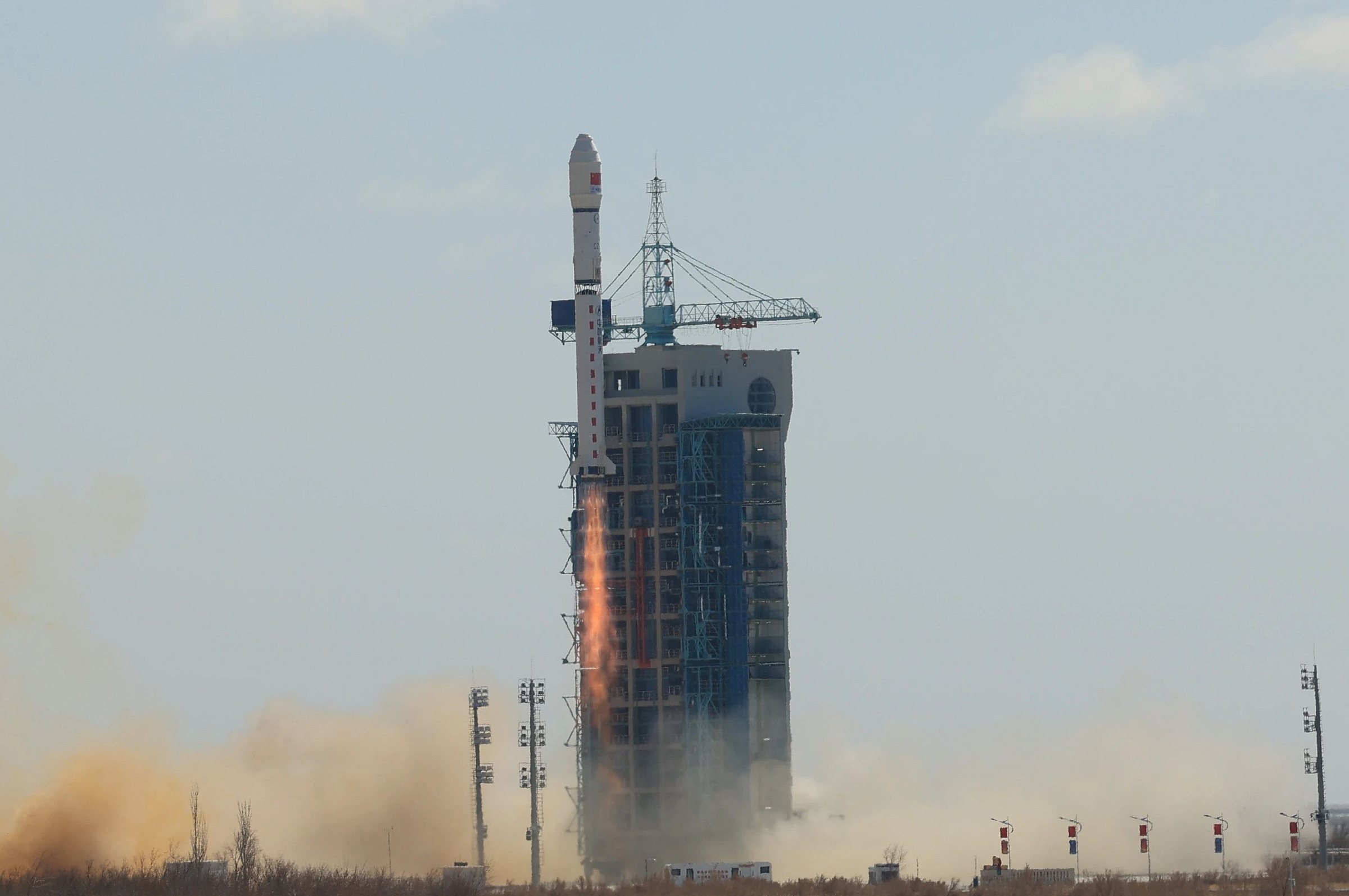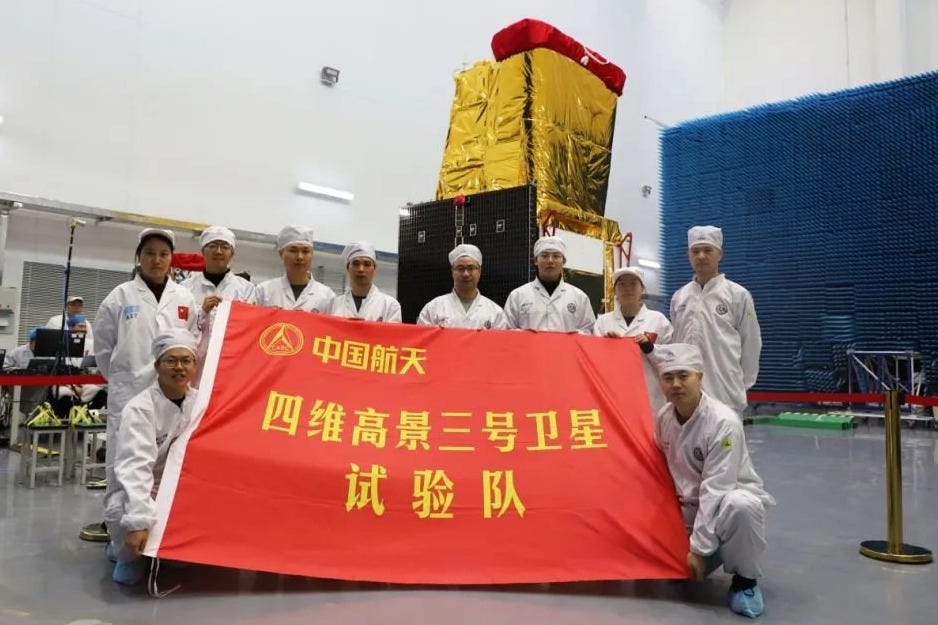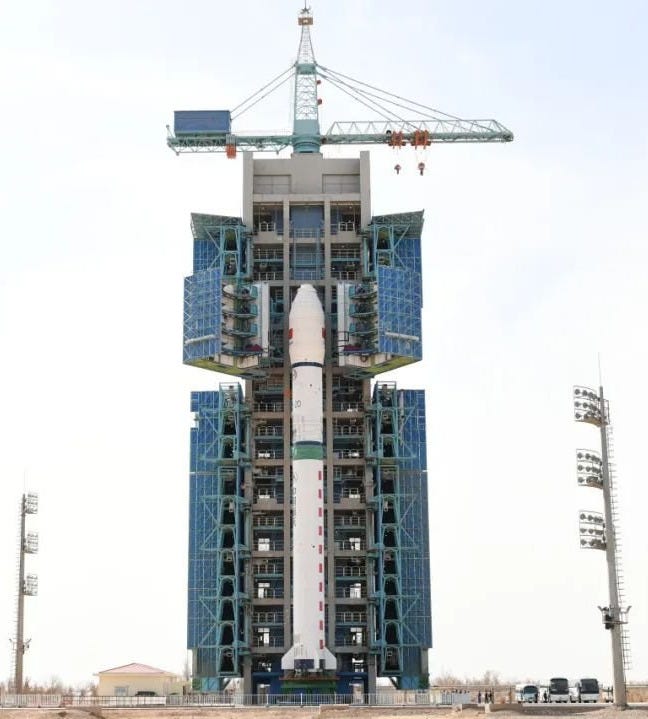Big Satellite, Small Satellite Launched for Earth Imaging [Long March 2D Y100]
China Siwei's SuperView Neo-3 has gained a sister satellite in orbit.

A Long March 2D blasted off from Launch Area 4 at the Jiuquan Satellite Launch Center on March 15th at 12:11 pm China Standard Time, or 04:11 am Universal Coordinated Time. This launch carried a commercial satellite and a small spacecraft into sun-synchronous orbit.
The primary payload atop of the Long March 2D was China Siwei Survey and Mapping Technology’s (中国四维测绘技术有限公司) Siwei Gaojing-3 02 (四维高景三号02) satellite, referred to as SuperView Neo-3 02 in English. It was also manufactured and developed by the Shanghai Academy of Spaceflight Technology.
SuperView Neo-3 02 is stated to be an intelligently flexible, high reliability commercial optical imaging satellite with high positioning accuracy, and image resolution claimed to be 0.5 meters. The spacecraft operator additionally claims the capabilities are industry leading in China and on par with international offerings. This spacecraft now joins its sister spacecraft, SuperView Neo-3 01 (四维高景三号01), in orbit after it was launched in April 2024 to image key provinces and cities in China regularly. Uses for the spacecraft duo include digital agriculture management, smart water conservancy, digital city planning, as well as land resources surveying, urban management, environmental protection monitoring, disaster prevention and reduction, and maritime security.
Hitching a ride to space with China Siwei’s spacecraft was the MinoSpace (微纳星空) made Tianyan-23 (天雁23) satellite. Tianyan-23 is likely based on MinoSpace’s MN50 satellite bus for small Earth observation satellites, and boasts an imaging resolution of under a meter.

Today’s launch was the 96th mission for the Long March 2D, the 230th Long March vehicle from the Shanghai Academy of Spaceflight Technology, and the 564th launch of the Long March launch vehicle series. This was also the 13th launch from China in 2025.
Liftoff video via 航天五线谱 on Weibo.
Check out the previous Long March 2D launch
Pakistani remote sensing satellite launched from Jiuquan [Long March 2D Y101]
At 12:07 pm China Standard Time, or 04:07 am Universal Coordinated Time, a Long March 2D blasted off from Launch Area 4 at the Jiuquan Satellite Launch Center heading for sun-synchronous orbit.
What is the Long March 2D?
This section is for those less familiar with China's Long March series of launch vehicles.
The Long March 2D is also one of the oldest launch vehicles from China, performing missions regularly to low Earth and sun-synchronous orbits by the Shanghai Academy of Spaceflight Technology, as a two-stage version of the Long March 4 vehicles. The two stages of the launch vehicle both burn Dinitrogen Tetroxide and Unsymmetrical Dimethylhydrazine.
The payload capacity of the launch vehicle is currently as follows:
3,500 kilograms to low Earth orbit
1,300 kilograms to a sun-synchronous orbit
The first-stage is powered by four YF-21C engines, which generate 302 tons of thrust burning Dinitrogen Tetroxide and Unsymmetrical Dimethylhydrazine. The second-stage is powered by a single YF-22C engine and four YF-23C verniers that generate 80 tons of thrust while also burning Dinitrogen Tetroxide and Unsymmetrical Dimethylhydrazine.
On the launch pad, the Long March 2D is 41.05 meters tall and weighs 232,250 kilograms when fully fuelled. The first and second stages have a diameter of 3.35 meters, with the fairing having a diameter of either 3.35, 3.8, or approximately 4 meters.
So far the Long March 2D has flown from all three inland launch sites, the Jiuquan Satellite Launch Center, the Taiyuan Satellite Launch Center, and the Xichang Satellite Launch Center.






![Pakistani remote sensing satellite launched from Jiuquan [Long March 2D Y101]](https://substackcdn.com/image/fetch/w_1300,h_650,c_fill,f_auto,q_auto:good,fl_progressive:steep,g_auto/https%3A%2F%2Fsubstack-post-media.s3.amazonaws.com%2Fpublic%2Fimages%2F10af9347-f52e-434b-8572-57e10ace60df_5568x3348.jpeg)
